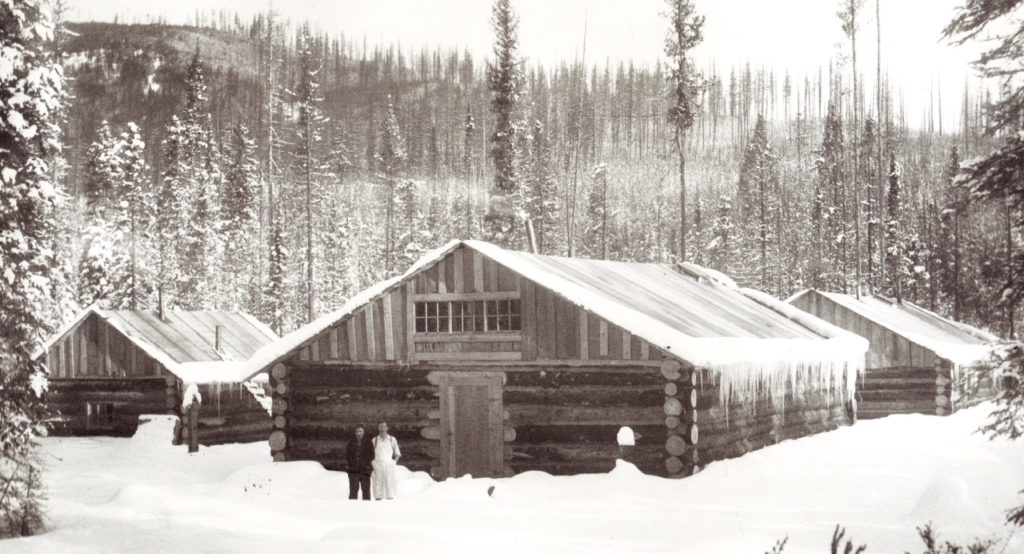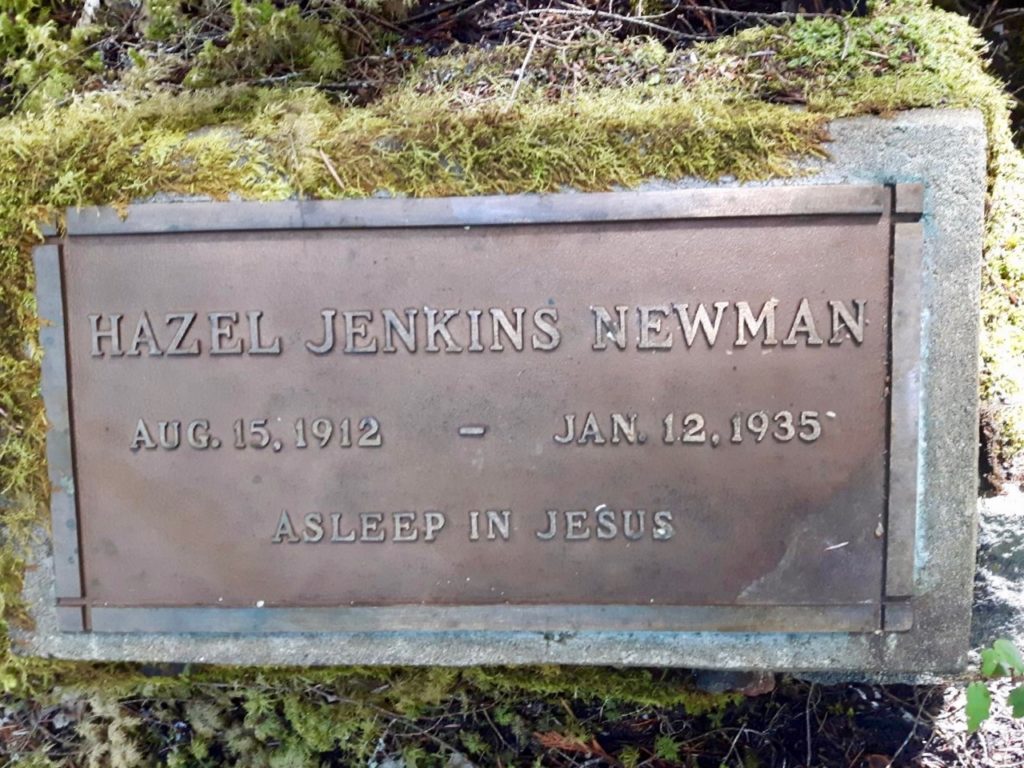
Photo by Walter Montgomery, courtesy of the Chase and District Museum and Archives.
There are few low elevation parcels of private land in the Shuswap that are as inhospitable as the north end of Adams Lake, where winters are harsh, summertime is ruled by insect pests and there is an abundance of bears and cougars. Yet it was this valley where a group of Seventh Day Adventists from Grant’s Pass, Oregon chose to establish a community in 1934.
They were led by Doc Jenkins, who must have been quite persuasive to convince upwards of 50 people to join them to homestead at the end of a remote, roadless lake. As he was a naturopath who practiced alternative medicine, he likely adhered to his religion’s strict religious vegetarianism and healthy living regime and abstained from alcohol, coffee and tea.
Their only transportation available was the tugboat and scow owned by Dave Fraser, who moved all the families with their gear and deposited them at the end of the lake. Here were the remains of a large Adams River Lumber Company camp called the Depot that closed in 1926 when the sawmill in Chase shut down, and where the sternwheeler the Hellen had docked. Imagine the incredible initiative and useful skills they must have had, as they arrived with just their tools, camping gear and horses.
In one summer on their property a kilometre from the lake, they built homes and a combination school and church out of the salvaged logs and lumber. Genette, Doc Jenkin’s secretary, lived on a farm on the other side of the river, so they built a suspension bridge using cables left over from the ALRC steam donkeys so she could visit the community and teach school. Their large garden helped, but they needed to spend their savings on supplies to survive.
In the fall, Doc Jenkins’ daughter Hazel married George Newman, a mason who was one of the colony’s key builders. That first winter was harsh and when they were snowed in, she gave birth to a son, then contracted pneumonia and died in January. Life continued to be a struggle for the community, yet they persevered for two more years, enduring the mosquitoes in the summer and the ice and snow in the winter. Given they had no way to get their produce to market, the men found work as loggers and trappers. In the summer they used a 24-kilometre trail to Barriere from Honeymoon Bay that they accessed by boat.
One winter they lost two horses, that broke through the ice and drowned in the river. Despite their isolation, there must have been some good times too. Undoubtedly, their likely adherence to strict religious practices including taking time off on Saturday, their Sabbath, to worship and play games, helped keep them unified. Eventually, the burdens became too great and the group dispersed. Doc Jenkins and his family settled on a small farm in the valley, about 14 km west of Squam Bay, where he continued his practice. Genette married Henry Height and remained on her farm for a few years before they left, and a few families moved to Yankee Flats.

Today, the colony’s log buildings have mostly decayed into the ground and recently, one slipped into the river when the bank eroded. Yet the tombstone for Hazel is well preserved and can still be found on this private property, where one person is currently living. It would be interesting to determine if there were other similar Adventist communities in North America and if so, did any survive longer than Doc Jenkins’s group?
Fast forward forty years, and group of modern-day pioneers attempted to form another small, quasi-intentional community. In 1974, Ken Harrison and his wife Carol purchased 315 acres adjacent to the Upper Adams River a few kilometres up from the head of the lake. Three more families joined them including Ross and Janet and the young daughter Laura who had spent the previous winter living on a raft. They had their cabin moved off the raft to the property. All the men except Ross worked in nearby logging camps, but the hardships were too great and within a few years, only Ken and his family remained.
POSTSCRIPT
There may be much more to this story, as I intend to visit the property one day where this community was located to see the decaying buildings that still remain, including the one used as a school. Unfortunately, there are fires nearby that are posing threats to the property owners, so any visit will have to wait until after the fire season is over. A nearby resident, retired bulldozer operator Art Warner explained how over the nearly 50 years he has lived there, a number of relatives of the community members came up to visit the area. Art had been collecting information about the community, including some archival material, but it was all lost in a house fire. He is very knowledgeable about the group and has many stories about them.
Much of the work at the Seventh Day Adventist community was done by George Newman, an accomplished stone mason. The group’s paster was Ed Stewart, but he was not there all the time. Art credits these two men as being the reason the group lasted as long as it did. Nettie lived on a separate property and was quite independent. Apparently, one time she decided to clear land by setting a fire and it took off and ended up burning half of the forest on the nearby mountain. When it became time to leave the property, Doc Jenkins refused to go and had to be hauled away to the barge while he continued to sit in his chair. After living at Squam Bay, Doc and his family moved to the Louis Creek valley where he set up a practice. One story about his doctoring describes how he was asked to treat a patient with cancer. He prescribed his usual regimen of sugar pills and supposedly the man survived, perhaps due to the placebo effect!
Forty years later, when Ken Harrison invited folks to share his property there were also many more young people who had come up for a summer. They were camping near the lake at the former Depot site, when the new owners of this property arrived to see it. The young people managed to deter the couple, who then left. Fortunately, the young people did not last there long and the couple returned to use the property as a summer retreat and lived there in cabin built by Art.






